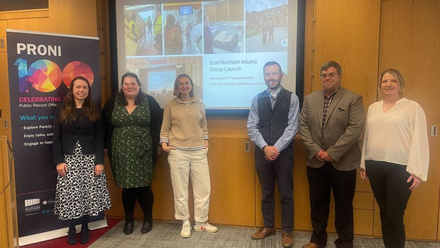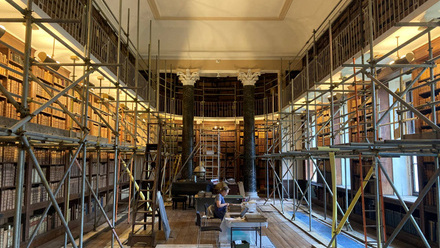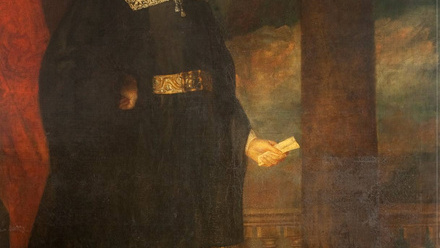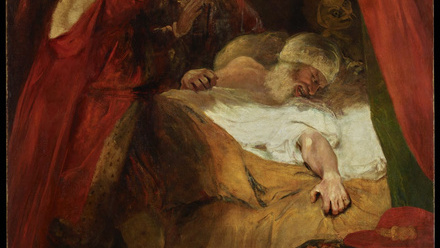The defacement of the Marcus Rashford tribute in Withington was shocking, but the subsequent flood of positive messages that covered the offensive graffiti restored a nation’s sense that the reactionaries were still in the minority. Manchester Central Library worked alongside conservators at the Manchester Museum and the University to remove and preserve the material, which by the day appointed for the job covered a large area of the wall and the entire pavement in front of it.
Icon member Eugenie Karen, the Conservation Officer based at Manchester Central Library, writes about working on the project.
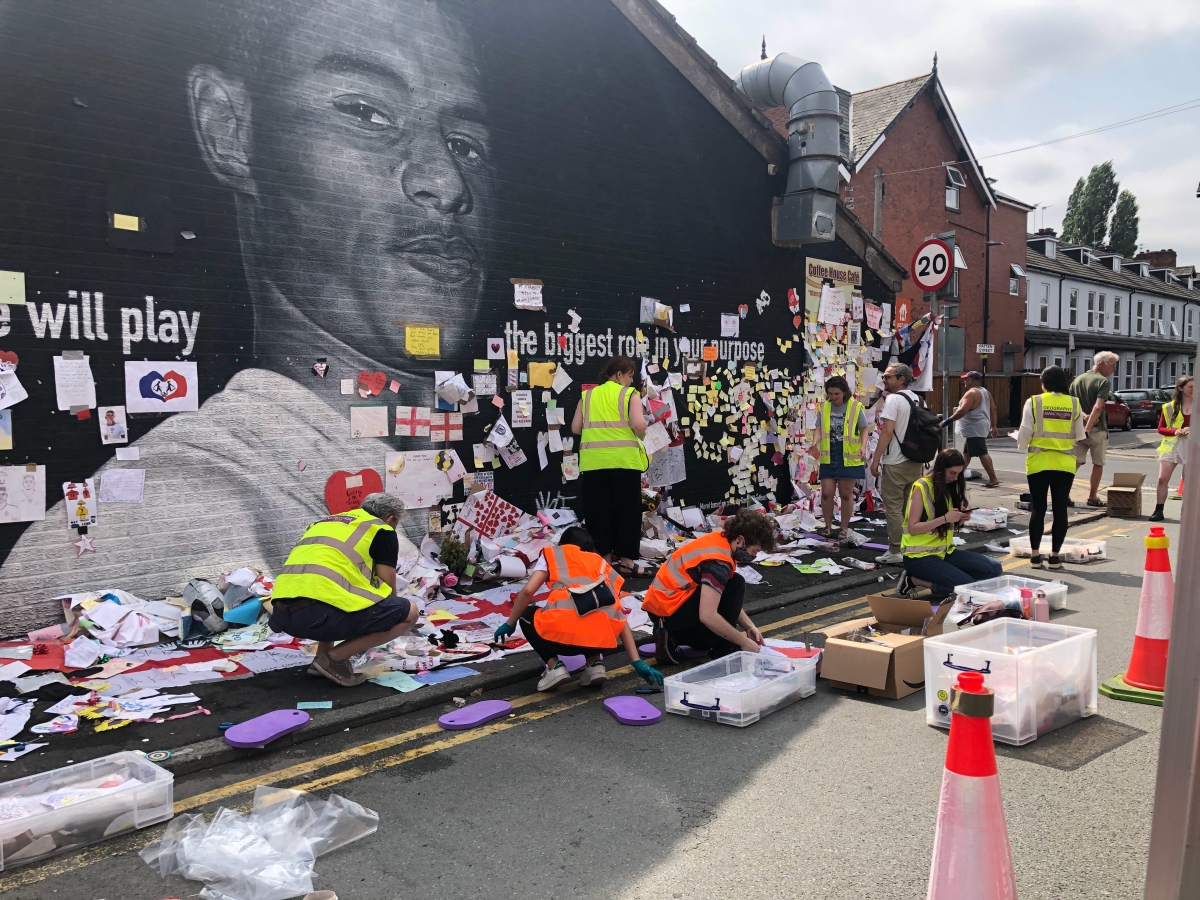
Withington Walls is a community street art project commissioning and delivering artwork on walls and shutters in this area of Greater Manchester. In response to Marcus Rashford’s tireless work on child poverty, the project commissioned the artist Akse to paint the tribute just off the village’s main street. Following the Euro 2020 penalty shootout against Italy, the painting was defaced with, in the words of Supt Richard Timson, district commander for GMP’s City of Manchester Division, "vile abuse”- but in response, thousands of people travelled from around the UK and beyond to Withington to leave messages and gifts showing their love and support for the player and what he stands for.
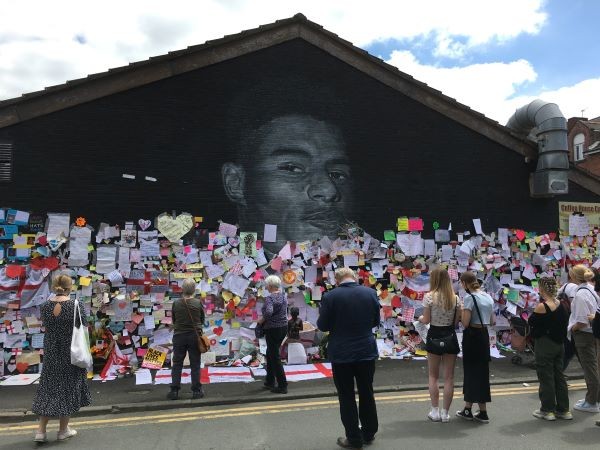
Manchester had been enjoying an unusual run of hot, dry weather - but rain was forecast, so a group of local institutions banded together to ensure the tributes were removed safely, and would be preserved and made available to the public in the future for education and display. We thought the dry spell would last until Friday, but Manchester lived up to its reputation by providing Withington with a localised short but heavy downpour on the Thursday night, which scuppered the original plan to bring the material to Central Library Archives+ directly. Harwell, the specialist disaster recovery company, were asked to come and collect the material for stabilisation.
Conservators and archivists from Central Library Archives+ and the Manchester Art Gallery teamed up with MA students from the Institute of Cultural Practices at The University of Manchester to do the practical work with support from Withington Walls project, The National Football Museum and The People’s History Museum.
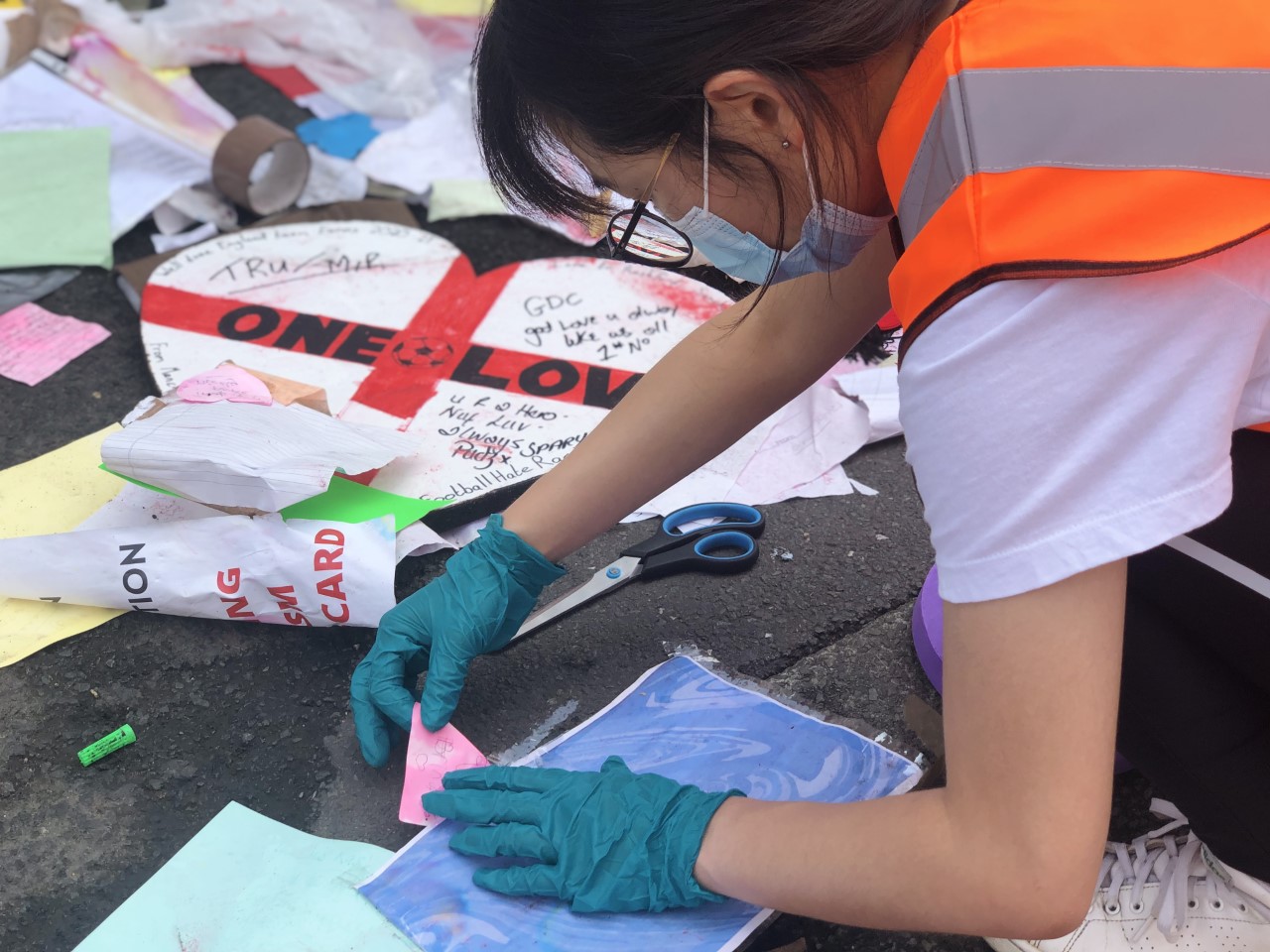
Anticipating that adhesives were going to be a big issue, we gathered a store of Melinex offcuts to affix to the tacky side of things. A stock of Really Useful Boxes were bought in, along with all the tools and equipment we could think of including, thankfully, a large stock of squidgy purple kneelers which were a godsend, as much time was spent on our knees painstakingly peeling off the mass of messages that had been stuck to the pavement once the wall space had been filled.
The rain had made a lot of objects damp, but it was not as bad as it might have been. The shower had been short and objects were drying out well in Friday’s hot, sunny weather. Getting to work, we encountered the first rather unpleasant surprise - the lurking maggots, which was slightly off putting but perfectly manageable. We were not fazed by the insects and subsequently discovered that many of the objects had been stuck down with a variety of sweets and chewing gum, which was far more revolting than maggots!
Removing all the messages individually would have been impossible in the time that we had, due to the volume and layering of the tributes. There were long banners, large sheets of card with individual messages affixed, often from a class full of children. Big flags were hung up and there were football shirts, toys, flowers and other gifts. We elected to package the larger items individually and smaller ones were affixed to Melinex (or when that ran out, to polythene) and laid in layers within boxes. Local businesses lent us bread trays when boxes ran low and offered us washing facilities.
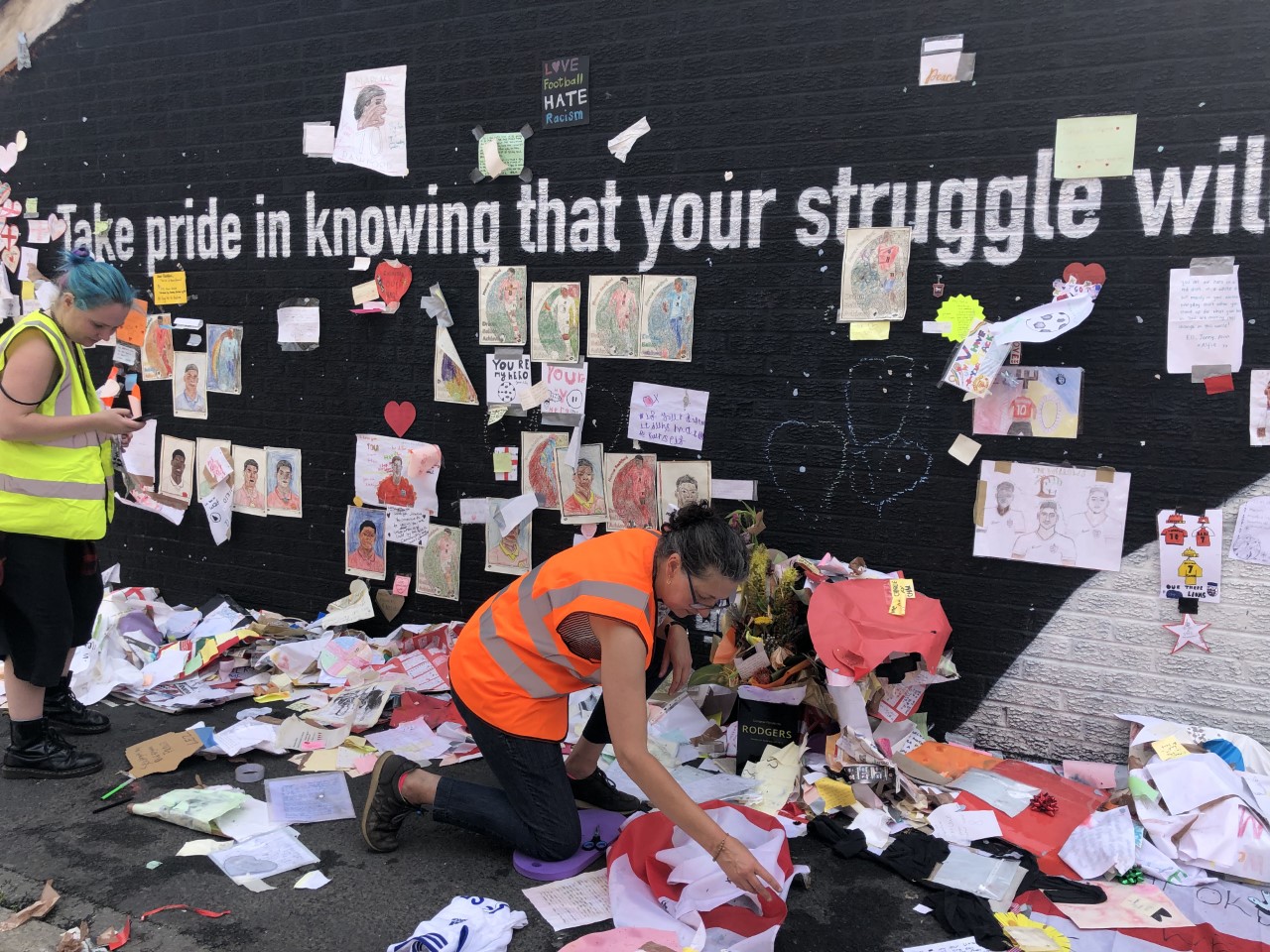
The rain had ruined only a small portion of the objects, and there were so many lovely, heartfelt messages that it was a pleasure to be going through them. People had sent good wishes from as far away as Mauritius and Nepal and while we worked, many people came and told us what the wall meant to them individually.
Once the work at Harwell is complete, we will bring the collection back to the Central Library Archives for conservation and cataloguing, and a decision will be made regarding a permanent home that will mean it is available to the public as a reminder of this seminal moment in our cultural history.
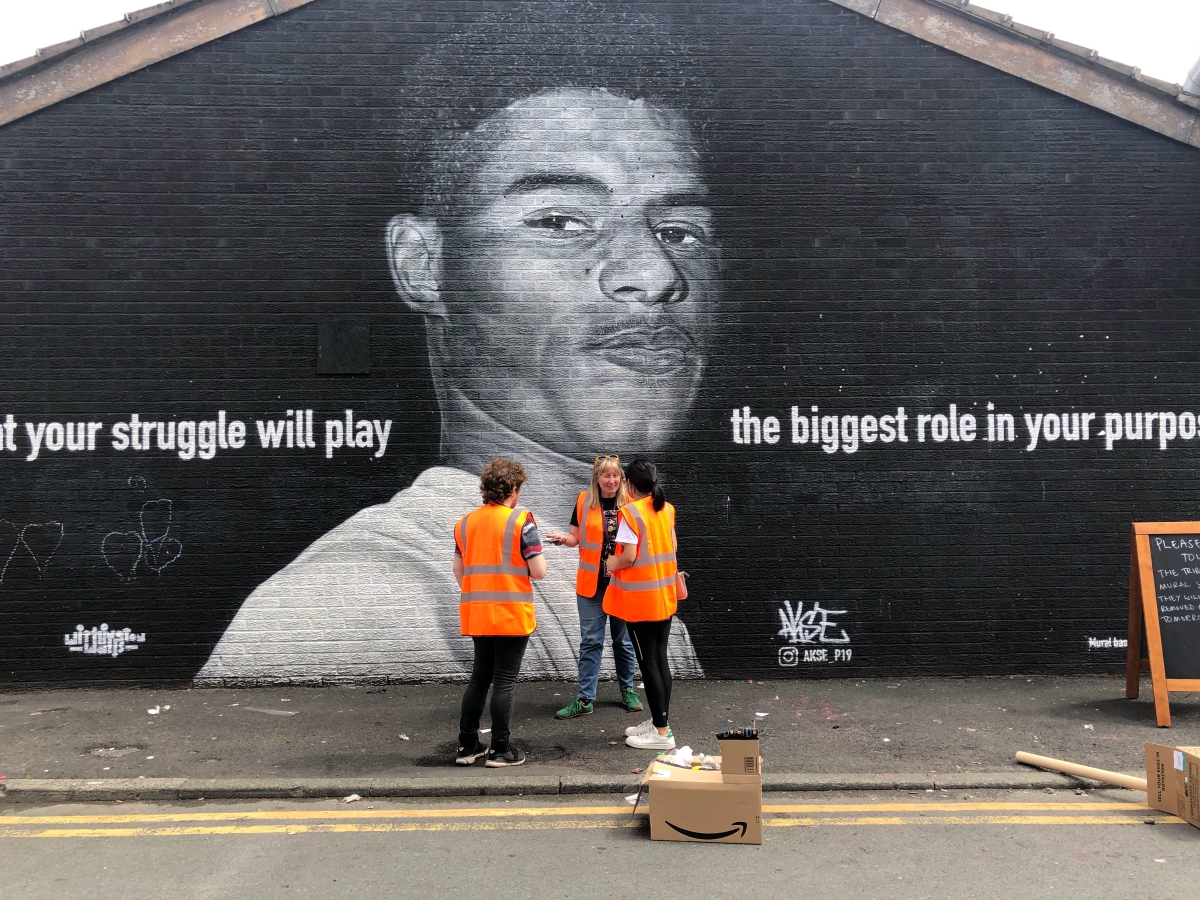
Councillor Luthfur Rahman OBE, Deputy Leader of Manchester City Council said:
The support and respect shown for Marcus and his teammates through the thousands of tributes left at his mural has been amazing and wonderful to see. The actions of all those who have turned up in solidarity to see his mural and leave their own messages of love and support for him has ‘Manchester’ stamped all the way through it.
We think it’s important this shared moment of solidarity – that started with the placing of just one small message of love on the mural after it was defaced – an action that spoke to the whole country and not just Manchester, is remembered and preserved for future generations.
This leg of the project was one of those rare opportunities for those of us who are usually studio-bound, to get out and meet the people who are invested in the work you are doing in that moment. It was a great privilege to be part of the team that day who were able to engage with and reassure visitors that all care was being taken with the tributes and essentially demonstrate a microcosm of how we work with all collections, although this was one of the more unusual accession routes.
Harwell Restoration, a disaster recovery company specialising in the restoration of documents, books, photographs and artworks after disasters such as fire and floods, was also involved in the project. When they received a call from Manchester City Council on the evening of the incident, Harwell Restoration deployed one of their senior technicians to meet the team from Manchester City Galleries the next day. The tributes were crated by the team, and then transferred back to their facility in Oxfordshire the same day, to be stabilised in their freezers. A quick reaction by the City Gallery and Harwell teams was vital. Harwell Restoration have been authorised to proceed with restoration, so the paper-based items will be vacuum dried in their specialist chambers.
Emma Dadson, Harwell Restoration's Key Account Director, said:
I know the whole team took particular pride in the work we undertook for Manchester previously in preserving the tributes from the Manchester Arena attacks. It felt incredibly important. This time it's different: rather than commemorations of lives tragically lost, we are helping to preserve a significant display of solidarity at an important moment, speaking out against racism, which was important not just for the community in Manchester but for the country as a whole.
The Harwell team have been asked to restore a number of public tributes in the past, at the request of various local authority archive services who have handled the removal and preservation sensitively. Working on these tributes in the past has been moving for the team, and they hope that careful and sensitive drying will enable the collections to be retained safely, locally, and that at some point this may be of comfort to those who were bereaved and affected by the events.
Conservation in Action
Conservation in Action is a follow-up project from the “Values of Conservation” research project, which identified and articulated the values of cultural heritage conservation to society. We now want to demonstrate these values through a series of Conservation in Action stories – they are one of the most effective advocacy tools at our disposal, due to their power to captivate stakeholders, policy makers and those less familiar with the sector.
Some of the Values of Conservation we discussed in our report are:
- Sense of place: Conservation supports healthy communities by preserving cultural heritage, which gives places their character, brings communities together and fosters pride of place.
- Sense of identity: Conservation enables cultural heritage to enrich the lives of individuals by nurturing a sense of identity and promoting a positive connection to a shared past.
- Innovation and creativity: Conservation preserves the source material of our future artists and cultural professionals, driving innovation across the arts and creative industries.
The swift initiative to restore the Marcus Rashford mural after vandalisation and conserve the heartfelt messages left by his fans is a testament to how conservation saves and protects what matters the most to individuals and communities.
Conservation fosters a sense of identity for communities, and preserves collective memory. With the help of conservators, a symbol of the community coming together to replace messages of hate with praise and support will be preserved for future generations.
Have a project you want to share with the world? Get in touch!


